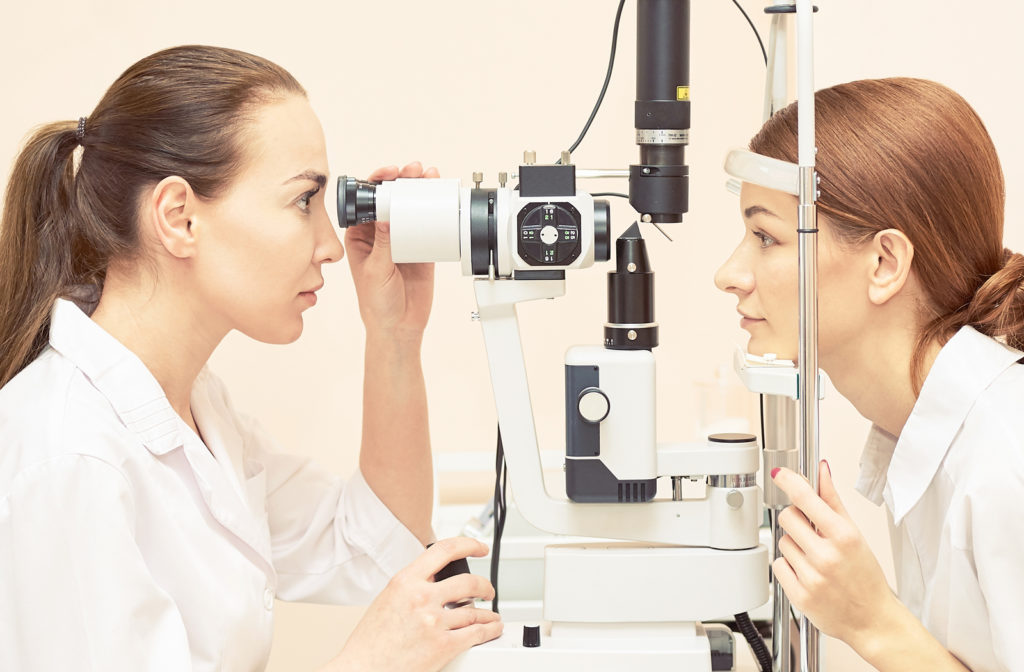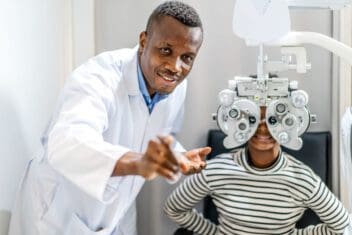Professional Eye Doctor in Riverside: Your Vision is Our Top priority
Professional Eye Doctor in Riverside: Your Vision is Our Top priority
Blog Article
The Comprehensive Eye Exam: What to Expect During Your Visit to the Eye Physician
A visit to the eye medical professional for a detailed eye examination is even more than a routine check-up; it is a critical step in safeguarding your aesthetic health and wellness. What specifically occurs during the eye wellness evaluation, and how does it affect the prescription process?
First Assessment
The first examination during an eye examination functions as a crucial structure for comprehending a person's visual health needs. This phase establishes the tone for the whole evaluation procedure, enabling the eye doctor to gather necessary information regarding the patient's clinical background, way of life, and details vision issues. By diligently evaluating any kind of pre-existing conditions, medicines, or previous surgeries, the eye care expert can customize the evaluation to attend to specific needs successfully.

Moreover, the preliminary examination is a possibility for people to articulate any questions or concerns, cultivating a joint partnership with their medical care provider. This communication not just makes sure that the client feels informed and comfy however also empowers them to participate proactively in their eye wellness administration. Collectively, these conversations make it possible for the optometrist to develop a customized examination strategy, guaranteeing optimal treatment and accurate diagnosis.
Aesthetic Acuity Examination
Starting the core elements of an eye examination, the visual skill test is designed to analyze the sharpness and quality of an individual's vision. This crucial analysis assists establish exactly how well an individual can discern letters or signs at a standard distance, normally using a Snellen chart (Eye Doctor Optometrist). The chart consists of rows of letters that decrease in dimension from top to bottom, with the person positioned at a popular range of 20 feet
During the test, the patient is asked to cover one eye and read out loud the tiniest line of letters they can see plainly. This process is repeated for the various other eye. The outcomes are recorded as a fraction, with 20/20 vision suggesting typical aesthetic skill-- where the patient can see at 20 feet what a person with typical vision can see at that range.
The aesthetic skill examination also identifies prospective refractive errors such as astigmatism, nearsightedness, or hyperopia, which could necessitate corrective lenses. By establishing a baseline of visual performance, the test is an indispensable diagnostic tool that aids the eye care specialist in creating an ideal treatment plan tailored to the individual's special aesthetic demands.
Eye Wellness Analysis
Complying with the visual skill examination, an extensive eye health analysis is conducted to make sure the total well-being of the eyes. This important section of the eye examination entails a detailed assessment of both the external and interior structures of the eye.
With the usage of ophthalmoscopy or fundus photography, the retina, optic nerve, and blood vessels are thoroughly evaluated. In numerous instances, student dilation is done to boost presence of the internal eye structures, although this might result in short-lived light sensitivity for the individual.
In addition, intraocular stress is measured to screen for glaucoma danger. This is typically done utilizing tonometry, which can find raised pressure levels that might suggest prospective damages to the optic nerve. Jointly, these analyses form a thorough analysis to preserve ocular health.
Refraction and Prescription
Just how does one ensure optimal vision? An important action exists in the procedure of refraction and getting an accurate prescription. Refraction is a sophisticated procedure conducted by eye care professionals to determine the precise lens power needed to deal with refractive mistakes such as myopia, presbyopia, why not try here hyperopia, and astigmatism. The goal of this treatment is to evaluate exactly how light bends as it travels through the eye, permitting the practitioner to determine whether corrective the original source lenses are necessary for improved aesthetic skill.
Throughout the refraction process, the person is asked to look with a phoropter, a device that has various lenses. The practitioner will methodically change these lenses and ask the person to compare quality between alternatives up until the most effective possible vision is attained. This procedure is essential in crafting a precise prescription that defines the suitable lens power for spectacles or contact lenses.
The prescription originated from this treatment not only enhances vision but likewise offers as a foundation for picking suitable rehabilitative eyeglasses. It is vital to make certain that prescriptions are on a regular basis upgraded, as modifications in vision can occur gradually, emphasizing the relevance of regular eye evaluations. This careful attention to detail aids keep clear, comfy vision in life.
Follow-Up Recommendations

During a follow-up see, the eye medical professional will carry out a collection of examinations to review visual acuity and look for any adjustments in vision that may necessitate an upgrade to the prescription. Additionally, the follow-up supplies an opportunity to go over any discomfort or concerns experienced with present eyeglasses. Adjustments can be made to make sure comfort and efficacy, whether through lens adjustment or structure changes.
For clients with recurring problems such as glaucoma, diabetes-related eye problems, or macular deterioration, even more constant follow-ups might be required. These appointments are critical for taking care of and possibly slowing the development of eye illness. Complying with these recommendations can considerably add to maintaining aesthetic wellness and preventing long-term complications.
Final Thought
The extensive eye test is an essential procedure for preserving aesthetic health and wellness, including a detailed evaluation of clinical history and vision problems. Secret elements consist of the visual acuity test, which assesses eyesight clarity, and the eye health evaluation, which analyzes the general condition of the eyes.
A browse through to the eye doctor for a comprehensive eye examination is even more than a regular check-up; it is a vital step in securing your visual health.Kicking off the core elements of an eye exam, the aesthetic skill test is made to analyze the intensity and clarity of a client's vision.Complying with the aesthetic acuity examination, an extensive eye wellness analysis is carried out to make sure the total well-being of the eyes. These visits enable the eye care specialist to keep track of modifications in vision, update prescriptions, and examine the overall health of the eyes. Key parts include the visual skill test, which reviews sight quality, and the eye health and wellness assessment, which checks out the total problem of the eyes.
Report this page